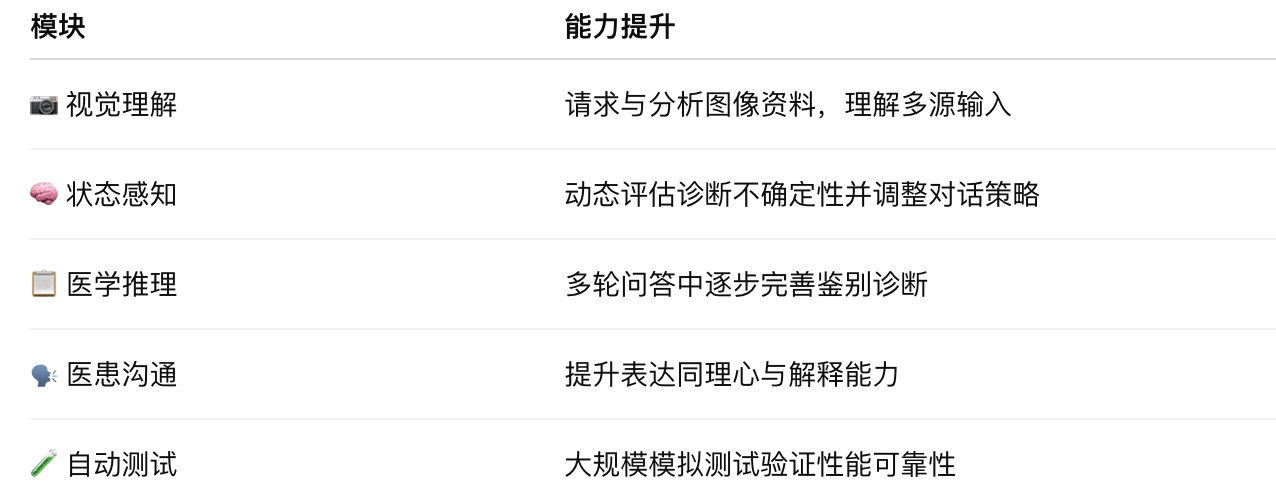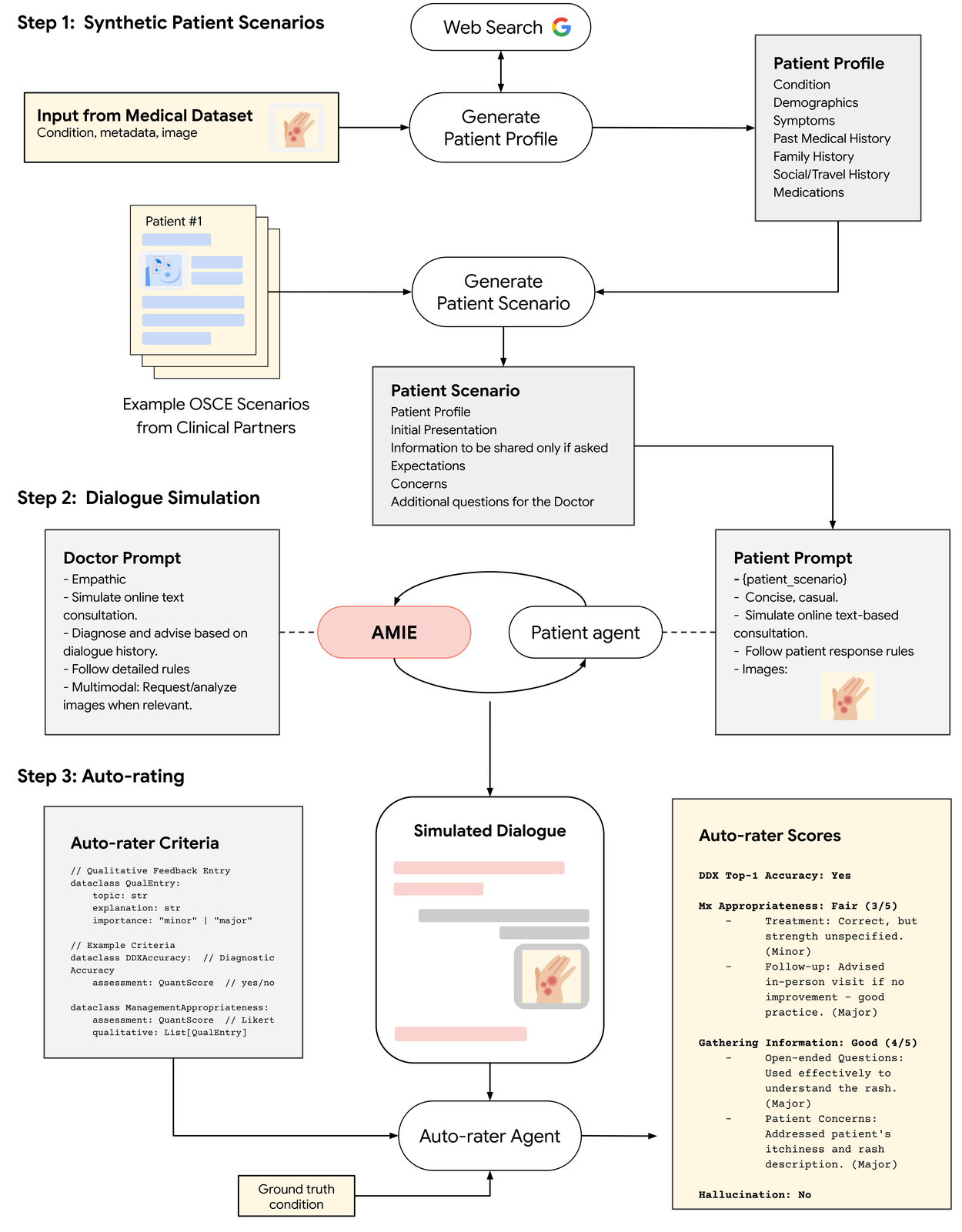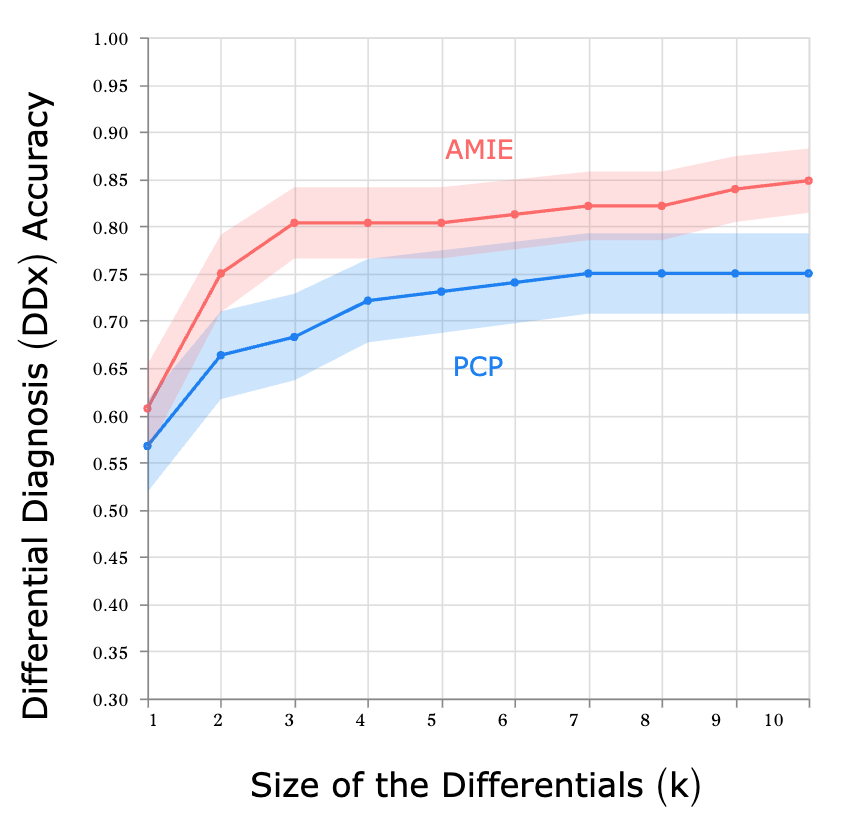- AMIE ‘s Visual Brain: Multimodular + State Perception Logic Structure
- How does it train and test?
- I’ll be right back
- What about the test results?
- Human doctor comparison experiment (virtual OSCE evaluation)
AMIE (Articulate Medical Intelligence Explorer) is the research-level medical dialogue AI system developed by Google and published earlier in Nature, focused text-based diagnosis. This upgrade to multi-model AMIE with the ability to understand, request and reason visual medical information.
** Any major upgrades this time?**
** Multi-modular capability: Previously only text-based dialogue was supported and visual information such as pictures, reports, etc. can now be processed. (e.g. skin photographs, laboratory tests, electrocardiograms, etc.)
** Think like a doctor: A dialogue process for class doctors has been built to support ** staged state perception reasoning.** It will judge what is missing from the information currently available and then automatically ask questions or request images, such as, “Please upload your skin photos.”
** The dialogue is more like a real-life consultation: the entire exchange is structured: first, then diagnosis, and finally advice or follow-up.
** AMIE multi-model upgrade means that AAI is evolving from a “linguist” to a “dialogue doctor’s assistant” with a basic diagnostic reasoning to interact with human machines and may become a core support tool in the health system in the future.
AMIE ‘s Visual Brain: Multimodular + State Perception Logic Structure
AMIE ‘ s multi-model capacity was developed through fine-tuning Gemini 2.0 Flash using diverse medical data (including images (e.g. dermatological photographs), time series data (e.g. electrocardiograms) and table data (e.g. laboratory results). This enabled AMIE to process a wide range of clinical inputs as a more common tool in diagnostic dialogue. ** Core mechanism: Status-Aware Dialogue** AMIE simulator ‘ s consultation strategy has the following capabilities: ** Perception of the current stage of diagnosis** ** Gap in diagnostic information for detection** ** Automatic request for necessary visual information** (e.g. photo of rash) ** Explain visual information and adjust diagnostic thinking** ** Multiple question-and-answer rounds to guide further examination or decision-making**
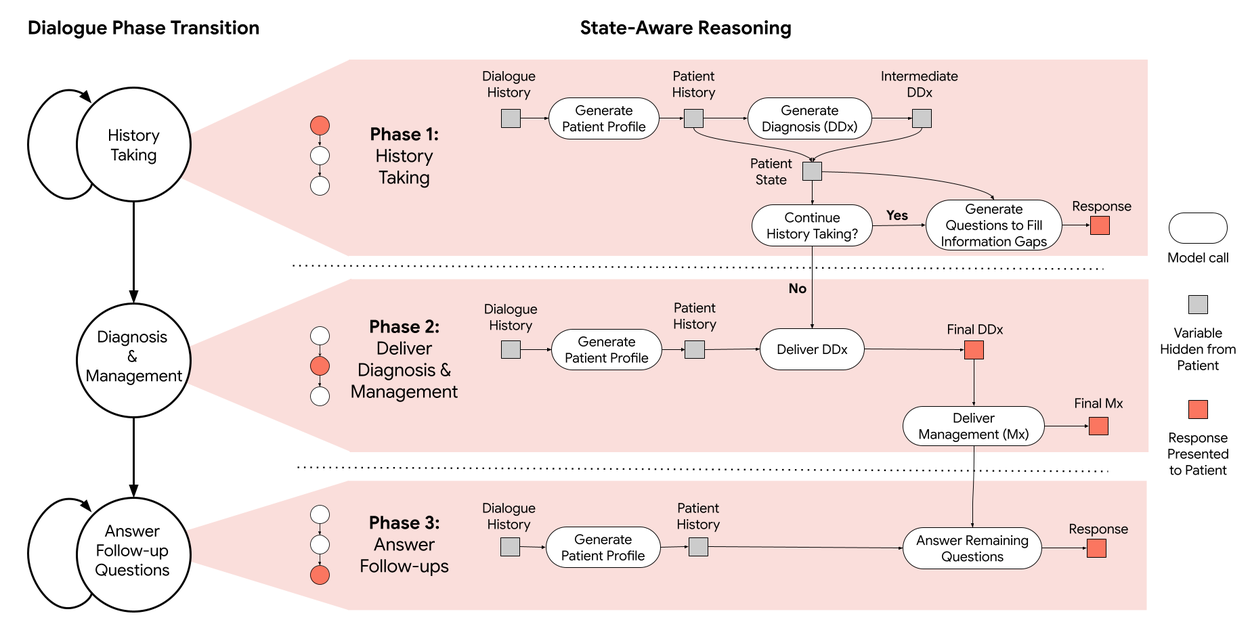
How does it train and test?
Google has built a simulated medical environment:
-
The system chats with virtual “patients”, who provide pictures and symptoms.
-
Simulation of dialogue in real medical examinations (similar to the “standardized patient” scene at the doctor’s internship).
-
An expert doctor evaluates AI’s performance, for example: is it in place? Is the diagnosis accurate?
To efficiently validate the quality of the system, Google constructed ** a complete dialogue simulation assessment framework**:
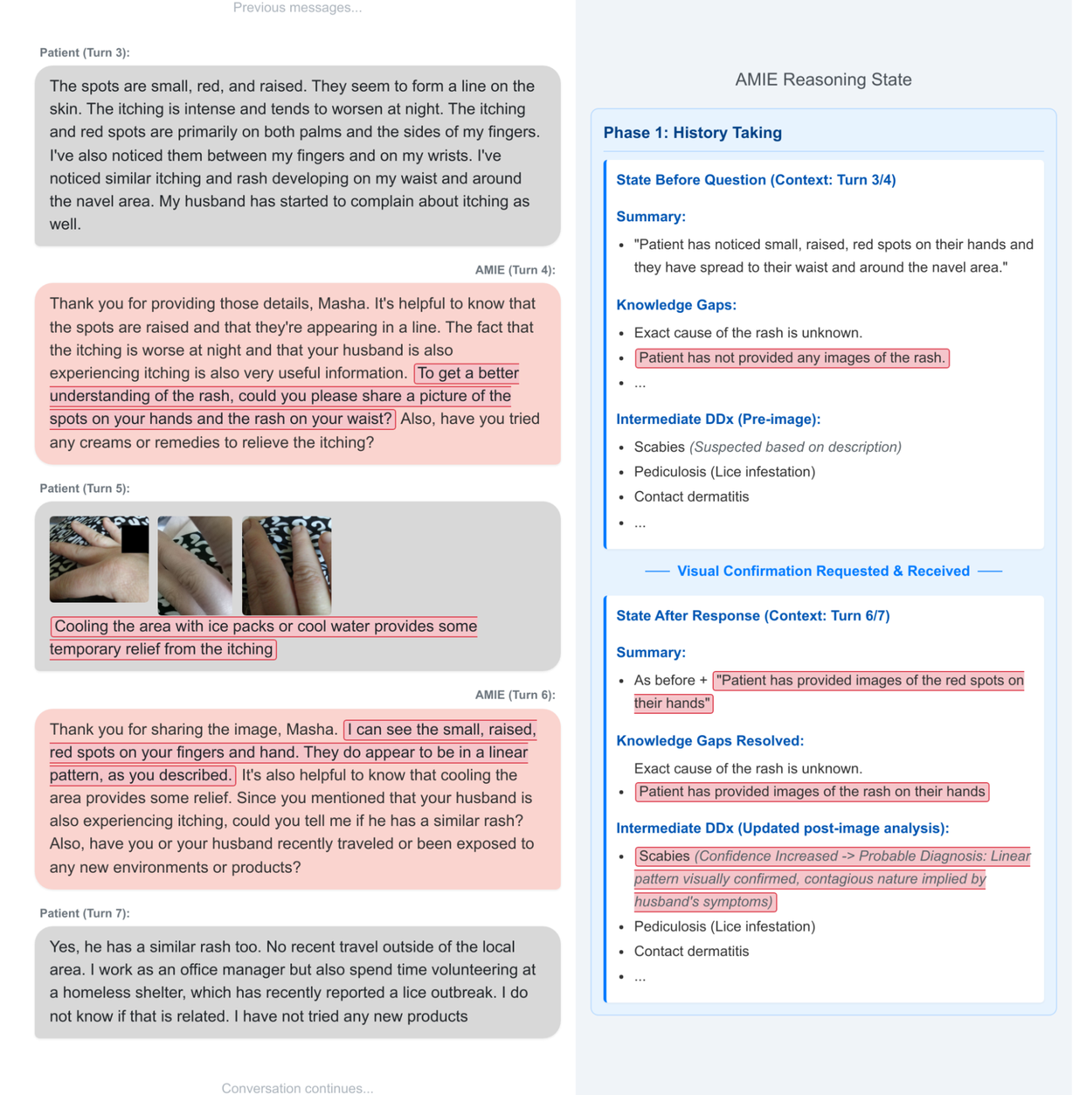
I’ll be right back
What about the test results?
AMIE is in many ways more than even a real junior doctor:
-
More accurate diagnosis.
-
I’m better at analyzing pictures.
-
The diagnosis is more complete.
-
It’s better to communicate with one another. It’s clearer.
Moreover, in its understanding of the picture,** there were few instances of “speeching” or misreading**.
Human doctor comparison experiment (virtual OSCE evaluation)
Using medical education standards for evaluation: ** Simulation of structured clinical examinations OSCE. **Experiential design:
-
For comparison: AMIE vs. Primary Health Care Doctors (PCPs)
-
Simulation cases: 105
-
Patients ‘ roleplayers can upload multi-model data (e.g. skin maps)
-
Blind scoring by dermatology/hearts/minors
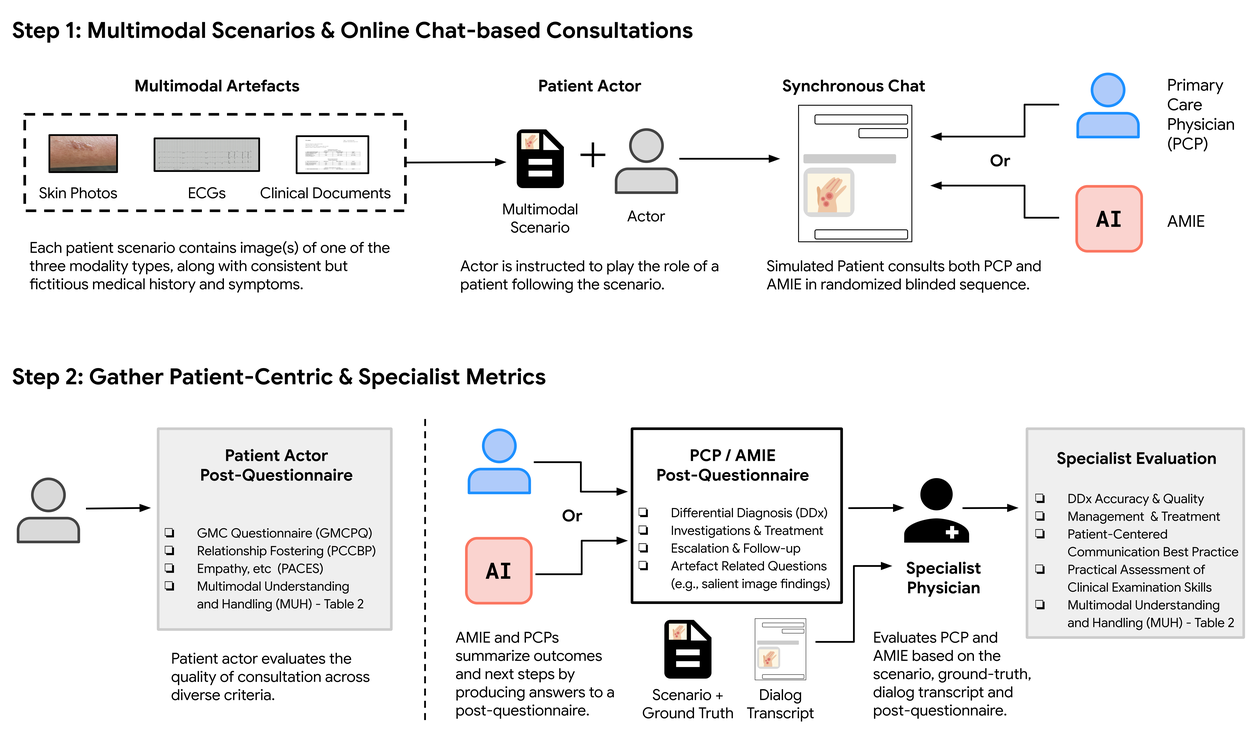
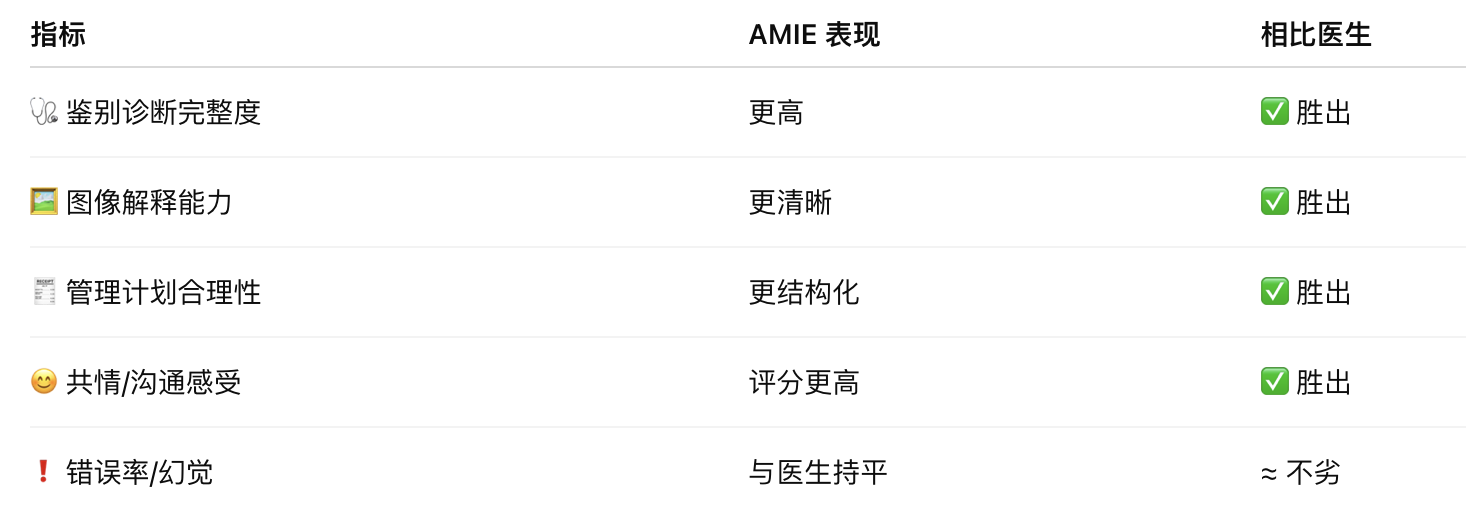
Bottom model upgrade experiment: Gemini 2.0 Flash 2.5 Flash
Preliminary assessment results (automated simulation):

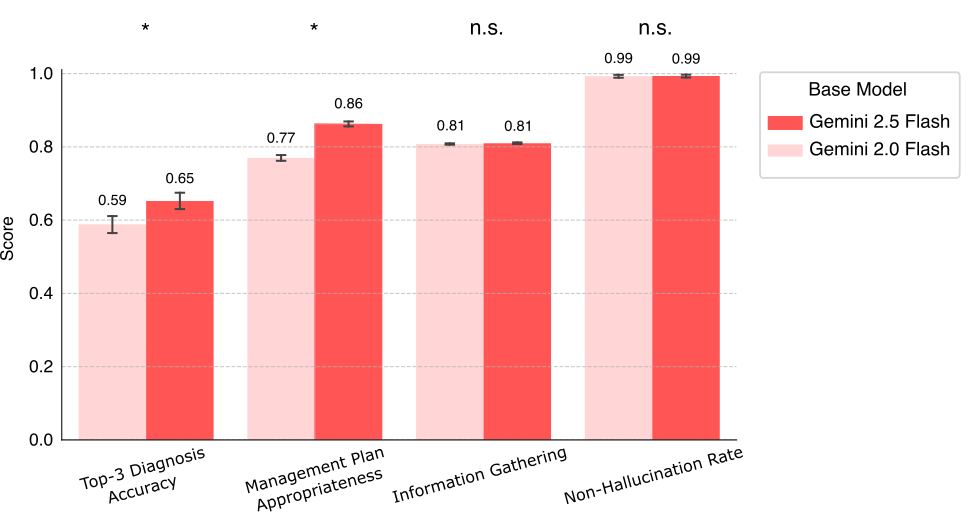
-
These results are currently only being tested in the simulated environment and need to be further tested in real hospitals.
-
The future will allow it to support voice, video, and not just typing.
-
Worked with Beth Israel Hospital in Boston to prepare a real clinical trial.
Original language: https://research.google/blog/amie-gains-vision-a-research-ai-agent-for-multi-modal-diagnostic-dialogue/

